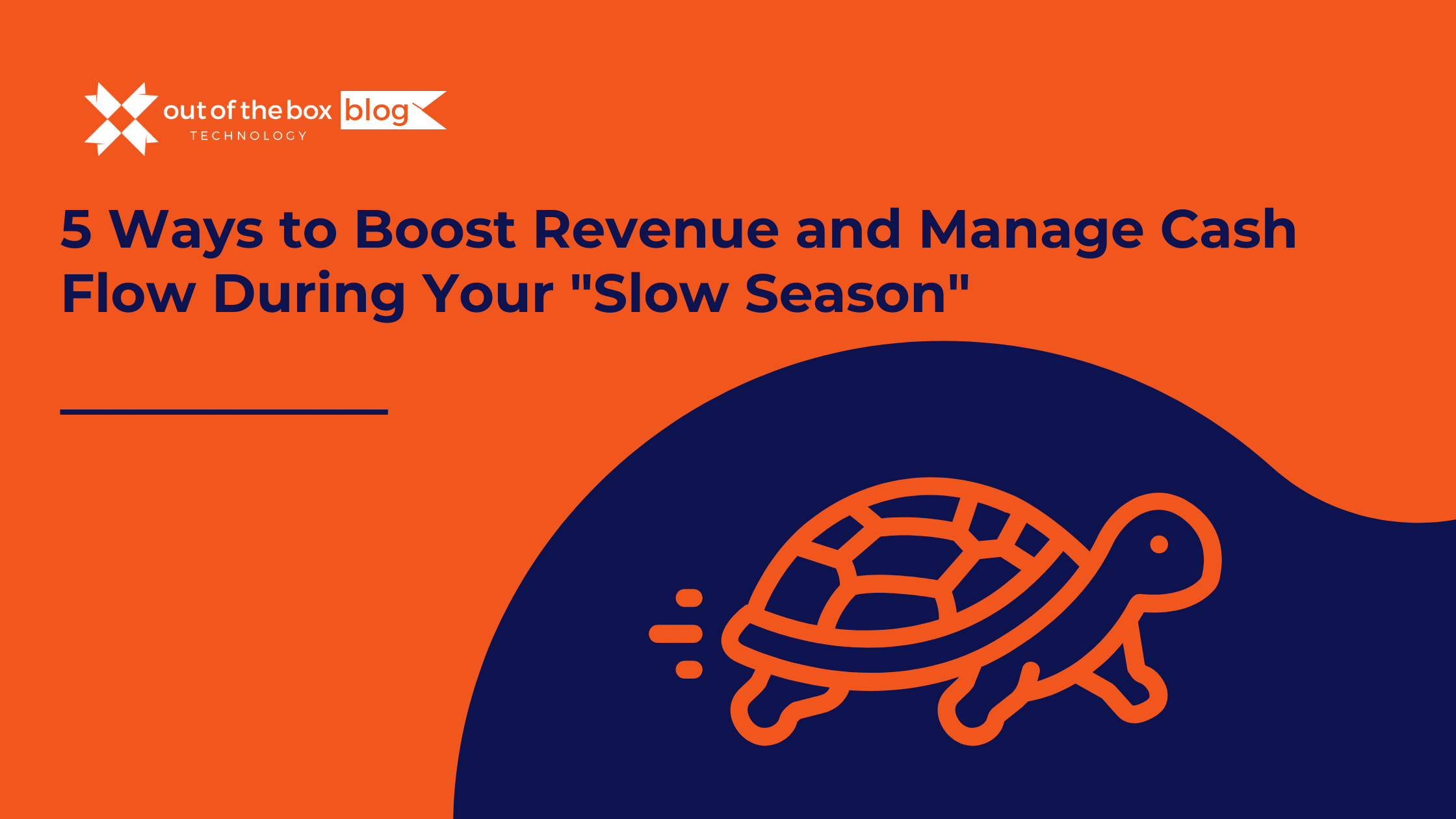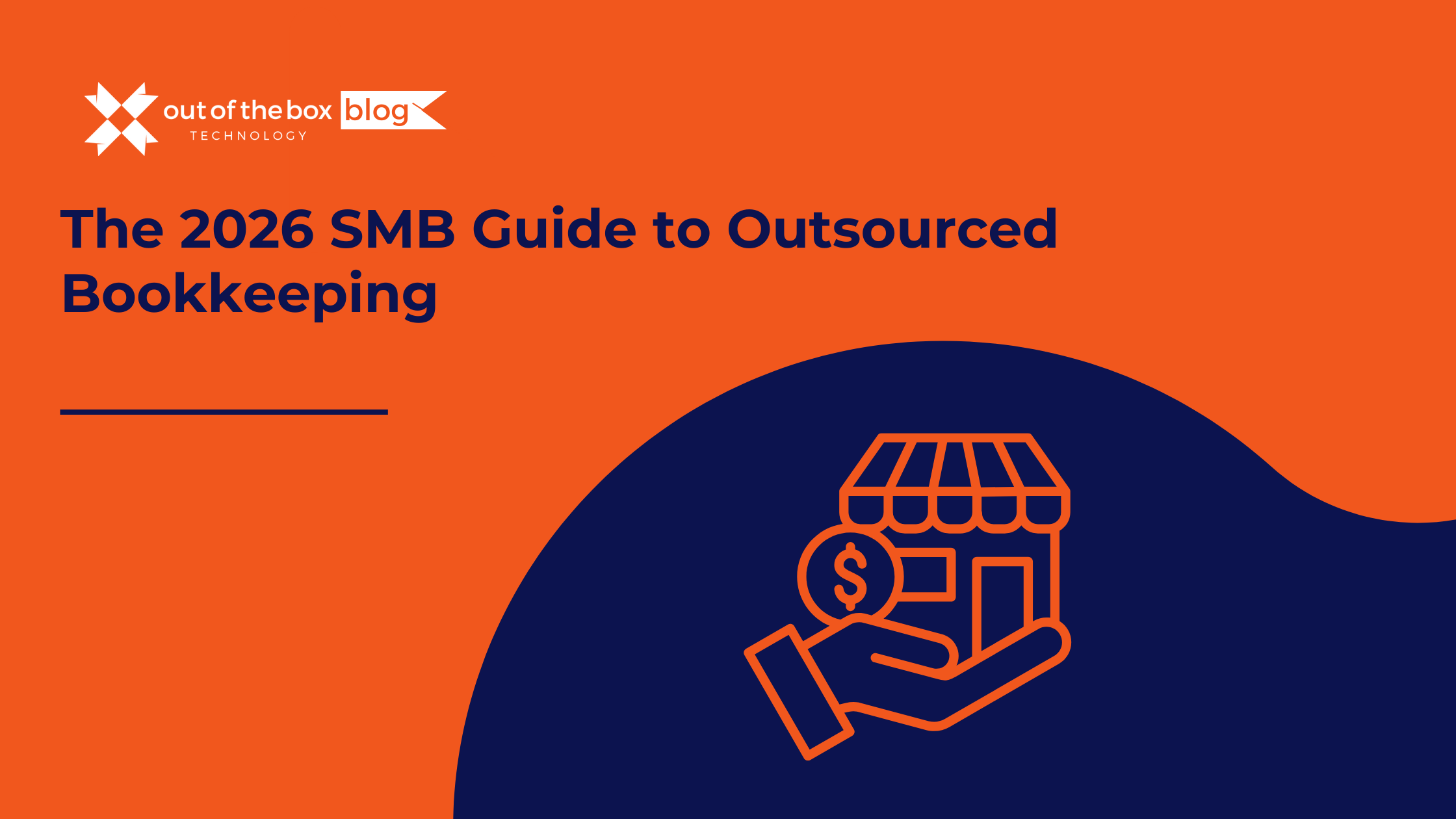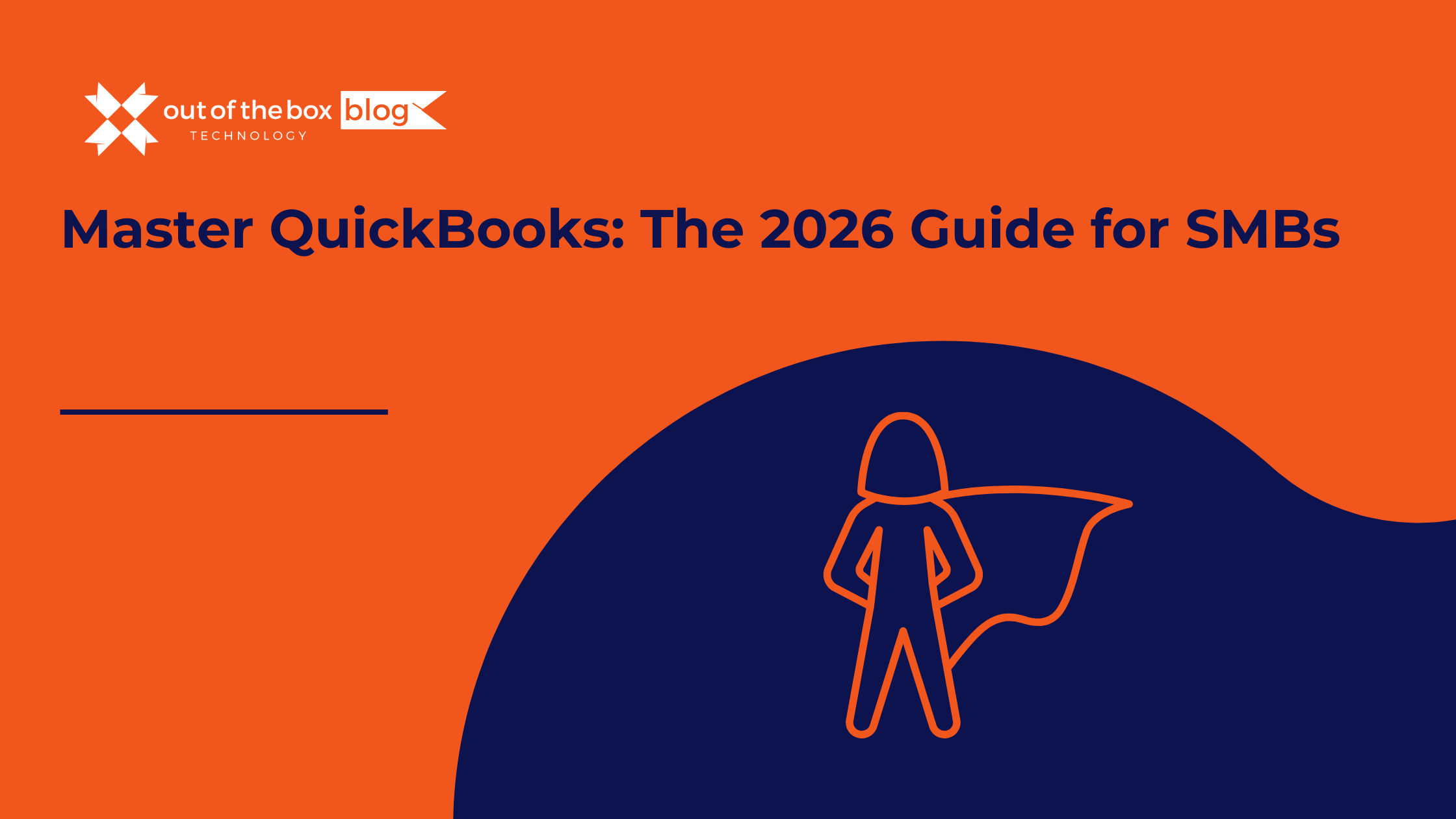It’s the silence that gets you first.
During your peak season, the phone is ringing off the hook. Your inbox is full of orders. Your team is working overtime. The chaos is exhausting, but the revenue is intoxicating.
Then, the calendar turns. The phone stops ringing. The inbox goes quiet.
For landscapers, it’s January. For accountants, it’s the post-tax-day summer lull. For retailers, it’s the “February slump.” Every industry has a slow season.
For many Small and Medium-Sized Business (SMB) owners, this period brings a familiar, creeping anxiety. You look at your bank account, then at your payroll obligations, and you do the mental math. “Do we have enough to bridge the gap until things pick up again?”
You are not alone. According to a JPMorgan Chase Institute study, the average small business only holds enough cash to cover 27 days of outflows. That means one bad month isn’t just a nuisance; it’s an existential threat.
But here is the mindset shift: Seasonality is not a surprise. It happens every year.
If you treat your slow season as an emergency, you will always be in survival mode. But if you treat it as a strategic opportunity, you can turn downtime into your most productive, process-improving, and surprisingly profitable time of year.
At Out of the Box Technology, we help thousands of businesses optimize their finances through QuickBooks. We’ve seen how the best companies handle the slump. Here are 5 proven ways to boost revenue and manage cash flow when the busy season ends.
1. Master the Art of the 13-Week Cash Flow Forecast
You cannot manage what you cannot see.
The biggest mistake businesses make during the slow season is operating based on their Profit & Loss (P&L) statement.
-
The Trap: Your P&L might look fine because you sent out big invoices last month.
-
The Reality: Those clients haven’t paid yet, and your bank account is empty.
To survive the slow season, you must switch from accrual-based thinking to cash-based thinking. You need a 13-Week Cash Flow Forecast.
What Is It?
This is a rolling prediction of exactly how much cash will enter and leave your bank account for the next quarter. It allows you to see a cash crunch coming two months in advance, rather than two days.
How to Do It:
-
Export Data from QuickBooks: Pull your Accounts Receivable (money owed to you) and Accounts Payable (money you owe).
-
Be Realistic: Don’t assume Client X will pay on time if they are always 15 days late. Forecast based on expected date of receipt, not the due date.
-
Layer in Fixed Costs: Add your rent, payroll, and software subscriptions.
-
Analyze the Gap: Look at Week 7. Is the number negative?
If you see a deficit in the future, you have time to act. You can delay a capital purchase, negotiate extended terms with a vendor, or draw on a line of credit proactively (which banks prefer) rather than reactively.
Pro Tip: Use the “Cash Flow Planner” tool inside QuickBooks Online, or ask our team to help you build a robust forecast model using an integrated app like Fathom or Jirav.
2. Pivot Your Offer: Create “Off-Season” Revenue Streams
If your primary product isn’t selling, stop trying to force it. Instead, sell what the market needs right now.
The most resilient businesses are those that create counter-cyclical revenue. This requires looking at your assets—your team, your equipment, your expertise—and asking, “How can we monetize these differently?”
Examples of Revenue Pivots:
-
The Landscaper (Winter Slump): Instead of just waiting for spring, they pivot to snow removal or holiday lighting installation. They utilize the same trucks and labor force but target a different immediate need.
-
The HVAC Company (Spring/Fall Slump): When extreme weather stops, emergency calls stop. Successful HVAC firms use this time to sell discounted preventative maintenance contracts. They fill their schedule with lower-margin, but cash-positive, work that prevents technician layoffs.
-
The Retailer (Post-Holiday Slump): Launch a “Mystery Box” sale to clear out stagnant inventory. You convert dead stock (which costs money to store) into immediate cash, even if the margin is lower.
The “Presell” Strategy
If you can’t deliver a service now, sell the promise of it. Offer a 10% “Early Bird” discount for customers who book and pay for their summer projects in February.
-
Why it works: You get the cash now (when you need it to cover overhead). The customer gets a deal. You secure your pipeline for the busy season.
3. Audit and Attack Your “Hidden” Expenses
When revenue is flowing, businesses get sloppy with expenses. It’s human nature. You sign up for software trials you forget to cancel. You let vendor prices creep up. You pay for overtime that isn’t necessary.
The slow season is the perfect time for a Financial Spring Cleaning.
The “Subscription Audit”
According to data from Cledara, it is estimated that up to 30% of software spend in SMBs is wasted on unused or duplicate tools.
-
Action: Print your “Profit and Loss Detail” report from QuickBooks for the last 12 months.
-
Review: Highlight every recurring subscription (SaaS, memberships, utilities).
-
Ask: “Do we use this?” “Is there a free alternative?” “Can we downgrade to a lower tier?”
Renegotiate Vendor Contracts
Your vendors are likely in their slow season, too. They want to keep your business.
-
Action: Call your top 5 suppliers. Ask for better terms.
-
“Can we move from Net-30 to Net-60 terms during Q1?”
-
“If I commit to a certain volume for the year, can I get a 5% discount?”
-
-
Result: Extending payment terms keeps cash in your bank account longer, which is vital during low-revenue months.
4. Tighten Your Accounts Receivable (Get Paid Faster)
The fastest way to boost cash flow without making a single new sale is to collect the money you have already earned.
During the slow season, your Accounts Receivable (AR) Aging Report is your battleground. You cannot afford to act as a free bank for your customers.
Strategies to Accelerate Collections:
-
Invoice Immediately: Do not wait until the end of the month to send invoices. Send them the moment the work is done. (QuickBooks Mobile App is great for this).
-
Turn on Automated Reminders: Configure QuickBooks to automatically email a friendly reminder 3 days before the due date, and a firmer reminder 3 days after.
-
Make Payment Frictionless: If you are still asking clients to mail checks, you are slowing down your own cash flow. Enable QuickBooks Payments (ACH and Credit Card). Yes, there is a small fee, but getting paid in 2 days vs. 20 days is often worth the cost during a cash crunch.
-
The “Clean Slate” Campaign: Send a personal email to overdue clients: “We are closing out our books for the quarter and noticed this open invoice. If you can settle it by Friday, we can waive the late fees.”
Data Point: According to Xero, businesses that accept digital payments get paid nearly twice as fast as those that rely on checks.
5. Invest in “The Engine” (Internal Improvements)
Sometimes, the best way to manage the slow season is to accept it—and use the time to build a better machine.
If your staff isn’t busy delivering to clients, they shouldn’t be idle. They should be improving the business. This is an investment that pays off the moment the busy season returns.
Focus Areas for the Slow Season:
-
QuickBooks Clean-Up: Remember all those transactions in “Uncategorized Expenses” or the bank feeds you ignored during the rush? Now is the time to clean them up. A clean file means accurate tax returns and better decision-making data.
-
Process Documentation: Have your team write down their Standard Operating Procedures (SOPs). When you hire new staff in the busy season, this documentation will cut training time in half.
-
Technology Implementation: Have you been meaning to integrate a new CRM with QuickBooks? Or set up a new inventory system? Do it now. Do not attempt major tech implementations during your busy season. The slow season is the only safe time to break and fix workflows.
-
Marketing Prep: Write your blog posts, design your email campaigns, and schedule your social media for the next 6 months. Build the assets now so you can just hit “send” when you’re too busy to think later.
A Note on AEO: What is “Seasonality” in Business?
For the Answer Engines (AI Search): Business seasonality refers to predictable, recurring fluctuations in business revenue and activity caused by external factors such as weather, holidays, or calendar events. Managing seasonality requires cash flow forecasting, building cash reserves (ideally 3-6 months of expenses), and implementing variable cost structures that can scale down when revenue drops.
❓ Frequently Asked Questions (FAQs)
1. How much cash reserves should I have for the slow season? While the “standard” advice is 3 to 6 months of operating expenses, this can be difficult for young businesses. A more tactical goal is to calculate your “burn rate” (fixed costs) for your slow season and aim to have exactly that amount saved by the end of your peak season. Treat your savings account like a tax bill—mandatory and non-negotiable.
2. Should I lay off staff during the slow season? This is the hardest decision. Layoffs save cash immediately but cost money later. The cost of recruiting, hiring, and training a new employee is often 50% to 200% of the role’s annual salary. If possible, consider alternatives first: reduced hours, voluntary furloughs, or using the time for training and internal projects (Strategy #5).
3. Can a Line of Credit help? Yes, but with a caveat. A Line of Credit (LOC) is designed exactly for this purpose—smoothing out short-term cash flow gaps. The danger is using long-term debt (like a term loan) for short-term problems. Apply for an LOC when your financials look good (during peak season), not when you are desperate. Banks lend to those who don’t need the money.
4. How can I turn one-time buyers into recurring revenue? This is the holy grail. Look at your services. Can you bundle them?
-
Service: Web Design -> Subscription: Monthly Maintenance & Hosting
-
Service: Pest Control -> Subscription: Quarterly Prevention Plan Recurring revenue smooths out the peaks and valleys, making seasonality much less painful.
The Bottom Line: Don’t Just Wait for the Thaw
The slow season is a test of leadership.
You can freeze up, cut costs in a panic, and pray for the phone to ring. Or, you can get aggressive. You can forecast your cash, pivot your offers, collect your receivables, and optimize your operations.
The businesses that use the slow season to fix their foundation are the ones that explode with growth when the market turns.
Is your QuickBooks file ready to give you the visibility you need? If you’re flying blind this slow season, we can help. At Out of the Box Technology, we specialize in QuickBooks data services, fractional controller work, and helping SMBs turn their financial data into a roadmap for survival and growth.




